The Corridor Bedroom Challenge

Does your bedroom feel more like a hallway than a safe, peaceful space? Many people with long, narrow bedrooms feel uneasy, as if they are sleeping in a tunnel or corridor. This uncomfortable feeling isn't just in your head; it happens because of how energy moves through the space. In feng shui, we call this life energy Qi. In a balanced room, Qi moves slowly and gently, helping the space and the people in it. However, the shape of a long, narrow room forces this energy to rush quickly from one end to the other, creating unstable energy right where you need calm the most. This is the main problem of the feng shui long narrow bedroom. The good news is that this is a common problem that can be fixed. This guide will give you step-by-step instructions to slow down this rushing energy, changing your corridor into a cozy space for deep rest and renewal.
Understanding Sha Qi
To fix the problem effectively, we must first understand what causes it. The fast-moving, disturbing energy created by a long, narrow layout is called Sha Qi, or "cutting energy." It's an aggressive type of Qi that creates stress and drains your personal energy instead of helping you. Think of it this way:
Imagine a river. A wide, winding river flows slowly, its waters leaving rich soil and feeding the land along its sides, creating a green, fertile valley. Now, imagine a narrow, straight canyon. Water rushes through it with great force, wearing away the sides and making it impossible for life to grow. Your long, narrow bedroom acts like that canyon.
This constant, subtle energy attack is why you might feel restless, have trouble falling asleep, or wake up feeling tired instead of refreshed. The long shape of the room creates a direct path for this Sha Qi to travel, often aimed right at your sleeping space. This can show up as a constant feeling of being "on edge" or lacking security, as your mind is constantly dealing with this invisible energy pressure. The goal of our feng shui fixes is to stop this path, slow the flow, and encourage the Qi to gather and wander, creating the calm environment of a wide, gentle river.
Mastering Bed Placement
The most important change you can make in any bedroom, especially a challenging one, is proper bed placement. This is your foundation. The main goal is to put your bed in the Commanding Position. This position gives you a clear view of the bedroom door without being directly in line with it. It's an ancient rule based on our basic need for safety; it allows your nervous system to relax because you can see who or what is entering your space, removing surprise. In a feng shui long narrow bedroom, achieving this can be tricky, but it is very important.
Here are the basic rules for bed placement:
- Place the bed so you can see the door at an angle from your pillow.
- Never position the bed so your feet point directly out the door. This is known as the "coffin position" and is considered the worst placement, as it copies how dead people are carried out of a room and is thought to drain life force.
- Make sure your headboard is against a solid wall. Avoid placing your bed under a window, as this creates a lack of support and can allow Qi to escape, leading to restless sleep.
- Avoid sharing a wall with a toilet or having beams or sloped ceilings directly over the bed, as these create heavy, oppressive energy.
What if your room's layout makes the ideal Commanding Position impossible? This is a common challenge. If you cannot avoid being in line with the door, the main fix is to place a large piece of furniture, like a tall, padded bench or a low chest, at the foot of the bed. This acts as a barrier, blocking the direct rush of Qi. If you cannot see the door from your bed, a well-placed, clear mirror can be a solution. Place a small, beautiful mirror in a location that allows you to see a reflection of the doorway from your bed. This "fixes" the issue by giving you symbolic control of the entrance.
5 Powerful Feng Shui Cures
Once your bed is in the best possible position, you can add more fixes to further balance the room's energy and reduce the "tunnel effect."
Break the Energy Racetrack
The main visual and energy issue is the long, unbroken path from one end of the room to the other. Your goal is to break up this "racetrack." You can do this by creating separate functional areas. This visually divides the room, making it feel shorter and wider, and it forces Qi to slow down and move around objects. For example, place a comfortable armchair and a small side table in a corner near the window to create a reading area. A low, wide bench at the foot of your bed not only acts as a barrier but also defines the boundary of your sleeping area. Even a low, horizontal bookshelf placed against one of the long walls can create a "stop" for the energy, encouraging it to gather rather than rush past. The key is to use furniture to create gentle diversions along the room's length.
Ground Space with Rugs
Flooring can either make worse or fix the shape of a room. A long, narrow runner will only emphasize the corridor effect. Instead, use rugs to ground the energy and define space. A large, square or circular rug is an excellent choice. Place it so that the bottom two-thirds of your bed and your nightstands are on the rug. This creates a powerful energy anchor—a stable "island" for your resting area that separates it from the "river" of Qi flowing through the room. The shape is important; a square provides Earth element stability, while a circle (Metal element) helps to gather and consolidate energy. The texture and color of the rug can also add a sense of weight and calm, further grounding the space.
Use Light and Color
Light and color are powerful tools for changing how space looks. To make a room feel less long, you can use a classic interior design trick with a feng shui twist. Paint the two shorter end walls a slightly darker or warmer shade than the two longer walls. This visually pulls the far wall closer, making the room feel more balanced. For example, if your long walls are a soft white, consider a gentle greige or a warm sand color for the wall behind your headboard and the wall at the opposite end.
For lighting, avoid a single, central overhead light. This creates a "runway" effect that lights up the entire length of the room and encourages fast-moving energy. Instead, use multiple sources of light at different heights to create soft pools of light. Place a lamp on each nightstand, a floor lamp in your reading corner, and perhaps a small accent light on a dresser. This layered lighting approach breaks up the space, adds warmth and coziness, and guides the Qi to rest in these gentle pools of light.
Strategic Mirror Use
Mirrors are powerful feng shui tools, but they must be used carefully, especially in a bedroom. In a long, narrow room, a common mistake is placing a large mirror on the far, short wall, which only doubles the perceived length of the room. The correct strategy is to place a mirror on one of the long walls. This creates an illusion of width, pushing the wall out and making the room feel more spacious and square. It effectively widens the "river" of Qi, encouraging it to slow down. However, the placement rules are strict.
| DO Place a Mirror Here | AVOID Placing a Mirror Here |
|---|---|
| On one of the long walls to create a sense of width and expand the space. | Directly facing your bed. A mirror reflecting the bed is believed to invite a third party into the relationship and can disrupt sleep by activating energy when you should be resting. |
| In a position where it reflects something beautiful, like a piece of art or a view of nature from a window. | Directly facing the bedroom door. This pushes all the good energy that enters the room right back out. |
| As a small, corrective tool to see the door from the bed if the Commanding Position is not possible. | On the wall at the far end of the room. This will visually elongate the space, worsening the tunnel effect. |
Guide the Eye Sideways

Where your eye goes, the energy flows. In a long room, the eye is naturally drawn down the length of the space to the far wall. You need to interrupt this journey. Avoid placing a single, dominant piece of art on that far wall, as it will act like a target, pulling the energy rapidly towards it. Instead, create a focal point on one of the long walls. A gallery wall made up of several smaller pieces arranged in a square-like or organic shape will draw attention sideways, forcing the eye—and the Qi—to slow down and engage with the side of the room. Alternatively, hang a substantial, calming piece of art on the wall you see immediately upon entering. This creates a positive first impression and sets a peaceful tone, preventing your focus from immediately shooting to the far end of the room.
Advanced Feng Shui Techniques
For those who want to go deeper, we can apply more detailed principles of the Bagua and the Five Elements to fine-tune the energy of your space.
Adapting the Bagua Map
The Bagua is the feng shui energy map, a grid of nine areas that correspond to different aspects of your life, such as Wealth & Prosperity, Fame & Reputation, and Love & Relationships. Traditionally, you align the bottom of the map (Career, Knowledge, Helpful People areas) with the wall containing the main door to the room. In an irregularly shaped room, like a long and narrow one, the map gets "stretched." This means some areas might feel compressed while others are elongated.
The key is to identify which Bagua areas fall into the far end of the room. For example, the far left corner from the door is often the Wealth corner, the far middle is Fame, and the far right is the Love/Relationship corner. Because energy struggles to reach these distant areas in a narrow room, they can become stagnant. You must consciously activate them to pull the Qi through the space in a more intentional way. For the Wealth corner, you could add a healthy, upward-growing plant. For the Fame area, place an inspiring image or a lamp to "illuminate" your reputation. In the Relationship corner, place items in pairs, like two candles or two rose quartz crystals.
Balancing with Five Elements
The Five Elements—Wood, Fire, Earth, Metal, and Water—are the building blocks of Qi. Using them consciously can help counteract the room's challenging shape.
- Earth Element: This is your most important ally. The Earth element is grounding, stable, and centering. It counters the fast, unstable energy of the room. Incorporate it with square shapes (square rugs, ottomans, art), earthy colors (sandy beige, soft yellows, terracotta), and materials like ceramics, pottery, and stone.
- Wood Element: The Wood element promotes upward growth. In a room with rushing horizontal energy, adding a vertical element can provide a helpful counter-balance. Use tall, narrow bookshelves, floor lamps that cast light upwards, or artwork with strong vertical lines. Healthy plants (if light allows) are the ultimate expression of the Wood element.
- Metal Element: The Metal element has a contracting, consolidating quality. It helps to pool and gather energy. Use the Metal element through circular shapes, such as a round mirror on a long wall, circular trays on a dresser, or round light fixtures. Metallic finishes in gold, silver, or bronze can also be used as accents.
A Real-World Transformation
Theory is important, but seeing these principles in action provides true clarity. At THE QI FLOW team, we frequently encounter the challenge of the feng shui long narrow bedroom. One memorable case involved a client, "Mark," who lived in a city apartment with a classic "corridor" bedroom. He came to us struggling with chronic insomnia and a constant low-level anxiety that he couldn't shake. He described his room as feeling "impersonal and rushed," a place to pass through, not to rest in.
Upon analysis, our team identified two primary issues: the bed was positioned with its side against the long wall but too close to the door, leaving him feeling vulnerable. And the path from the door to the far window was a completely empty, straight line, creating a powerful channel of Sha Qi.
Here is what THE QI FLOW team implemented:
First, we moved the bed further down the long wall, placing it in the true Commanding Position where he could see the door. To anchor this new placement, we introduced a large, plush, circular rug in an earthy beige tone (Earth and Metal elements). This immediately defined the sleep area as a calm "island." At the foot of the bed, we added a low, upholstered bench, which created a subtle but effective energetic barrier. The most significant change was on the opposite long wall. Instead of leaving it bare, we hung a curated series of three large, square abstract art pieces. This created a compelling visual focus that encouraged the eye—and the Qi—to move sideways, effectively "widening" the room.
The results were immediate and profound.
Mark told us, "The moment the rug and the bench went in, the room felt instantly calmer and somehow wider. It no longer feels like a tunnel. I'm sleeping through the night for the first time in years. It finally feels like my sanctuary."
This transformation illustrates how a few strategic changes, grounded in solid feng shui principles, can completely alter the feeling and function of a space.
Your 4-Step Action Plan
Feeling overwhelmed? Don't be. Transforming your bedroom is a process, not a one-day project. Here is a simple, manageable plan to get you started.
- Assess & Declutter: Begin by removing everything that doesn't belong in a bedroom (exercise equipment, work papers, clutter). A clean slate allows you to clearly see the room's energy and flow.
- Prioritize the Bed: Tackle the Commanding Position first. This single adjustment will provide the most significant benefit. Work with your room's limitations and use the cures mentioned if the perfect spot isn't possible.
- Layer One Cure at a Time: Don't try to do everything at once. Choose one cure from the list that resonates with you—perhaps starting with a new rug or a different lighting setup. Live with that change for a week.
- Observe & Adjust: Pay close attention to how the room feels after each change. How is your sleep? How do you feel when you wake up? Feng shui is an intuitive art. The goal is to create a space that personally supports and nurtures you.
From Corridor to Cocoon
A feng shui long narrow bedroom presents a distinct energetic challenge, but it is one with clear, effective, and proven solutions. By understanding the movement of Qi and implementing these strategies, you are not just redecorating; you are actively reshaping the energy of your most personal space. The goal is to thoughtfully interrupt the "corridor effect," slow down the rushing energy, and encourage it to pool and meander gently. You can transform your bedroom from a space of passage and restlessness into a true cocoon—a personal sanctuary that promotes deep rest, healing, and rejuvenation. You have the power to create a space that supports and nurtures your well-being every single night.
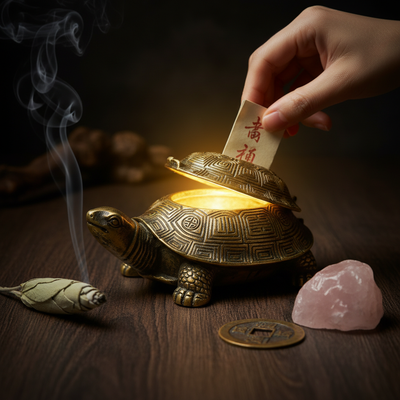
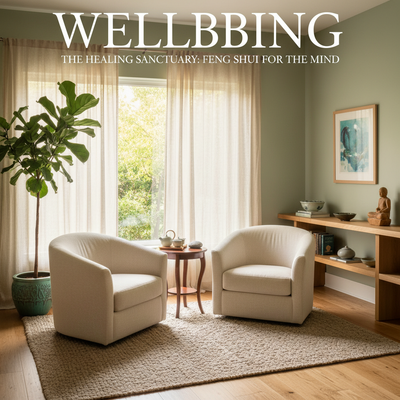
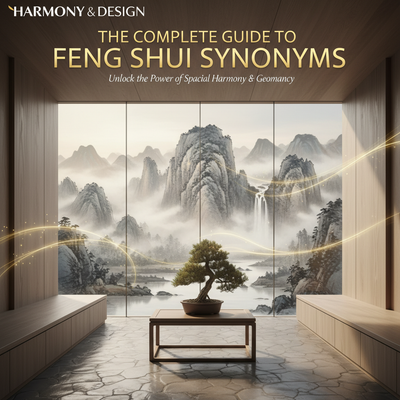
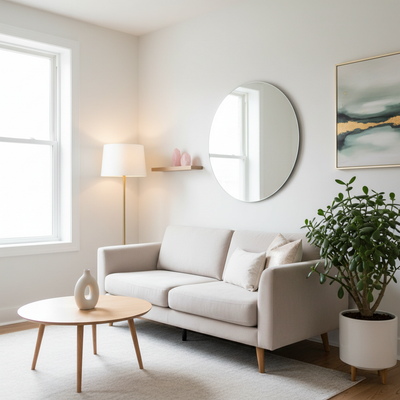

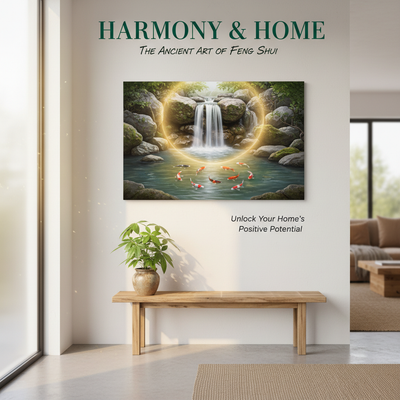

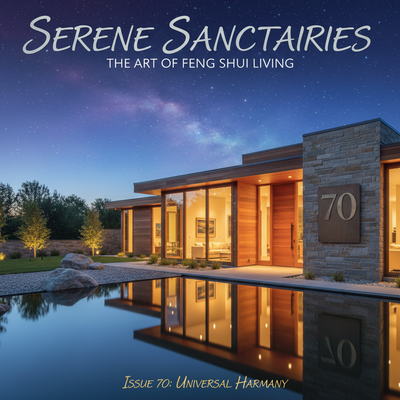
0 comments